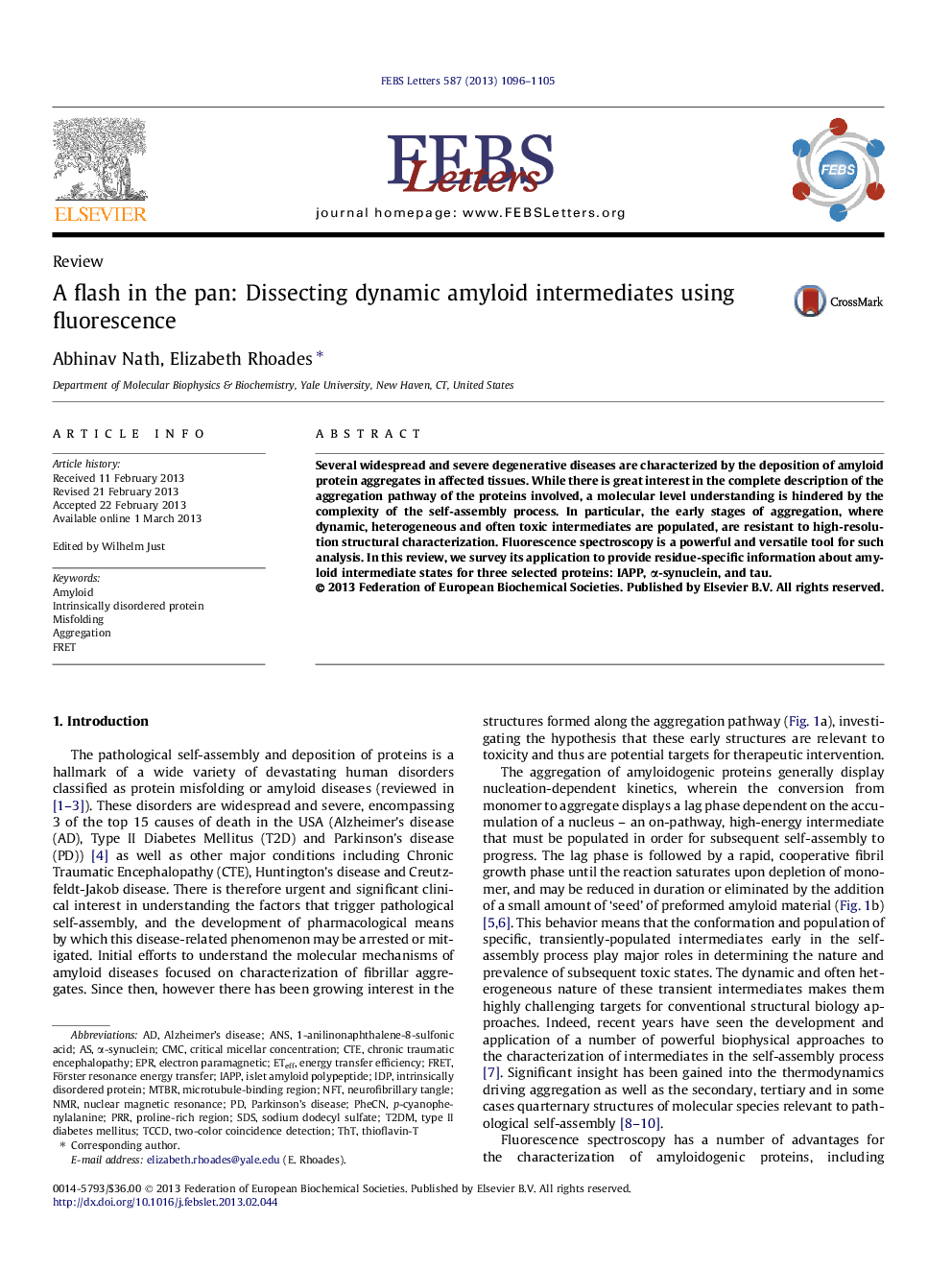| Article ID | Journal | Published Year | Pages | File Type |
|---|---|---|---|---|
| 10871034 | FEBS Letters | 2013 | 10 Pages |
Abstract
Several widespread and severe degenerative diseases are characterized by the deposition of amyloid protein aggregates in affected tissues. While there is great interest in the complete description of the aggregation pathway of the proteins involved, a molecular level understanding is hindered by the complexity of the self-assembly process. In particular, the early stages of aggregation, where dynamic, heterogeneous and often toxic intermediates are populated, are resistant to high-resolution structural characterization. Fluorescence spectroscopy is a powerful and versatile tool for such analysis. In this review, we survey its application to provide residue-specific information about amyloid intermediate states for three selected proteins: IAPP, α-synuclein, and tau.
Keywords
NFTTCCDp-CyanophenylalanineIAPPT2DMIDPPRRCTESDSCMCnuclear magnetic resonance1-anilinonaphthalene-8-sulfonic acidα-synucleinAmyloidMisfoldingFörster resonance energy transferFRETchronic traumatic encephalopathyEnergy transfer efficiencyThTAlzheimer’s diseaseParkinson’s diseaseAggregationNMREPRThioflavin-TNeurofibrillary tangleType II diabetes mellitusANSsodium dodecyl sulfateCritical micellar concentrationproline-rich regionIntrinsically disordered proteinIslet amyloid polypeptide
Related Topics
Life Sciences
Agricultural and Biological Sciences
Plant Science
Authors
Abhinav Nath, Elizabeth Rhoades,
